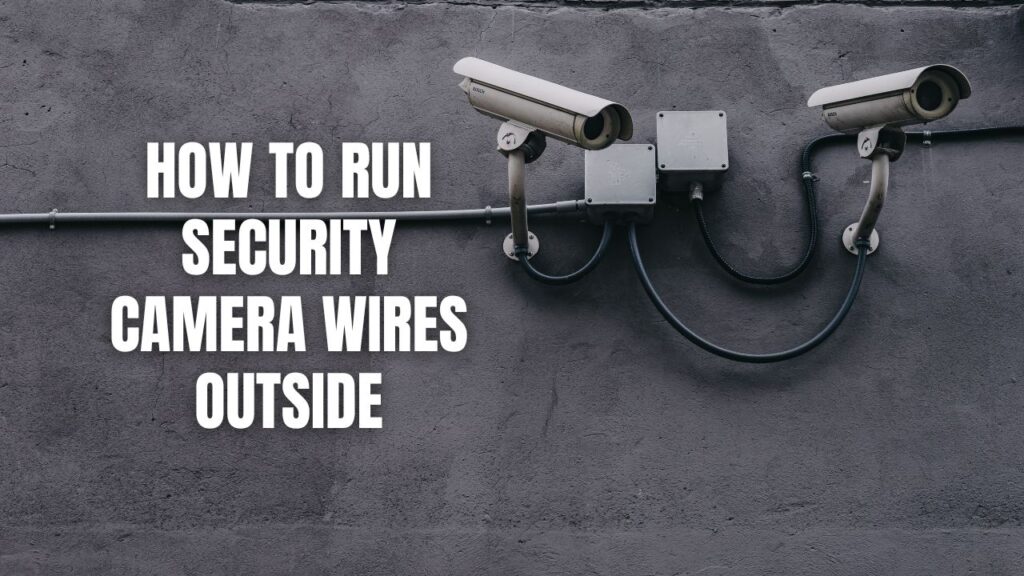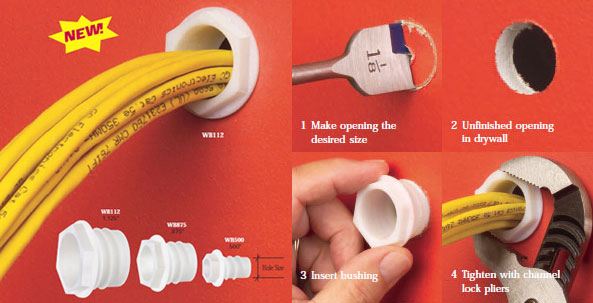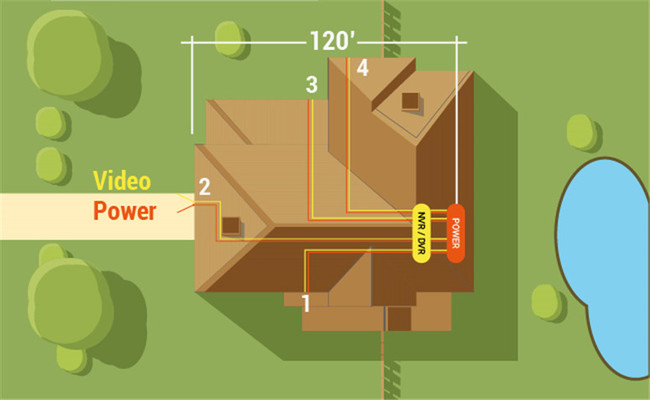Running security camera wires outside can seem complex. But it doesn’t have to be.
With the right steps, anyone can do it safely. Security cameras are essential for home safety. They deter intruders and monitor activities. But wiring them can be tricky, especially outdoors. You need to think about weather, distance, and safety. Proper planning is key.
This ensures the wires stay protected and functional. Whether you’re a DIY enthusiast or a beginner, understanding the basics helps. This guide will cover all you need to know. From tools to techniques, each step is clear and easy to follow. Soon, you’ll have your cameras set up and running smoothly. Ready to learn how? Let’s dive in!

Credit: callawaysecurity.com
Table of Contents
Planning The Installation
First, check the outside area for obstacles. Trees, walls, and fences may block wires. Measure the distance from your house to the camera spots. Make sure wires can reach without stretching. Look for safe paths for wires. Avoid places where people walk often. Consider the weather too. Rain or snow might damage wires. Choose protected spots for wiring.
Place cameras where they cover key areas. Entrances and driveways are important. Corners give wide views. Ensure cameras are high enough to avoid tampering. But not too high. You want clear images. Test camera angles before fixing them. Check for blind spots. Adjust positions if needed. Use mounting tools for steady placement. Keep cameras away from direct sunlight. This improves image quality.

Credit: diy.stackexchange.com
Selecting The Right Cables
Security cameras need good cables. These cables send video and power. There are two main types. Coaxial cables are one type. They are thick and strong. They carry video signals well. Ethernet cables are another type. They are thinner. They can carry video and power together. Many choose Ethernet for easy setup. Pick the right cable for your camera.
Outdoor cables need to be tough. Weather can be harsh. Rain and sun can damage cables. Look for weather-resistant options. These cables have special covers. They protect from rain and sun. Some cables are UV resistant. UV rays can harm cables. Protecting cables helps them last longer.
Tools Needed For Installation
To install security cameras, you need some essential tools. A drill is vital to make holes for wires. You will also need a screwdriver to fix the cameras. A fish tape helps in guiding wires through walls. Don’t forget the cable clips to secure wires neatly. A ladder is useful if the camera is high up.
Get a measuring tape to ensure wires reach the right places. A voltage tester checks if electric lines are safe. Lastly, have a wire cutter to trim cables as needed. With these tools, your installation will be smooth and easy.
Safety is important when installing cameras. Wear safety goggles to protect your eyes. They guard against dust and debris. Use gloves to keep your hands safe from cuts. A hard hat is a must if you are working under something heavy.
Always wear non-slip shoes to avoid falling. A safety harness is needed for high places. This gear keeps you secure and safe. By using safety gear, you reduce risks and stay protected.
Preparing For Cable Routing
Start by planning the path for your wires. Use a map or diagram. Draw lines where the wires will go. Think about where the cameras will be. Decide where the wires will connect inside the house. Measure the distance from start to end. Make sure the wires are long enough. Short wires might not reach. Look for easy paths. Straight lines are best. Avoid curves if you can.
Obstacles can be tricky. Check for things in the way. Trees, walls, or fences might block the path. Plan to go around them. Avoid sharp turns. They can damage wires. Be careful near water sources. Water can hurt wires. Use clips or ties to keep wires safe. Keep wires off the ground. This stops damage. Think ahead and check your plan. Make sure it works.
Running Wires Along Walls
Use clips to hold wires in place. Keep them close together. This stops wires from hanging or moving. Clips protect wires from damage. They also make things look neat.
Place clips every few inches. Use a drill to make holes. Then, screw in the clips. Make sure the wires do not sag. This way, they stay safe and secure.
Conduit pipes shield wires from harm. They keep wires safe from rain and wind. Pipes hide the wires, making them less visible.
Measure the wire path first. Cut the conduit to the right length. Then, slide the wires inside. Attach the conduit to the wall using brackets. This keeps everything tidy and secure.
Burying Cables Underground
Digging trenches is important for cable safety. First, mark where the cables will go. Then, use a shovel to dig a long trench. The trench should be deep enough to protect the cables. Usually, 18 inches deep is good. Check local rules for trench depth.
Protecting cables from moisture is very important. Moisture can damage cables quickly. Use waterproof cables or put cables in waterproof pipes. The pipes protect cables from rain and water. Seal pipe ends to keep moisture out. This keeps cables safe and dry.
Connecting To Power Sources
Pick a power supply that fits your camera’s needs. Some cameras use batteries. Others need to plug into a wall. Check the voltage and ampere. It must match the camera. Use a weatherproof box for outlets. This keeps them safe from rain and sun. You can use an extension cord. Make sure it is safe to use outside. A waterproof cord is best.
Safety is very important. Keep wires away from water. Use clips to hold them tight. Tape can help. Check often for damage. Make sure wires are not easy to trip over. Cover them with plastic tubes. This keeps them safe. If wires are near kids, cover them well. Teach kids to not touch wires. Inspect wires monthly. Replace any that look bad.

Credit: reolink.com
Testing And Troubleshooting
Always ensure the wires are properly connected. Check each connection point. Loose wires can cause poor video quality. Also, inspect the power source. Make sure it is stable and functioning.
Use a test monitor. Connect it to the security camera. This helps verify the video feed. The image should be clear without any flickering.
Sometimes, cameras don’t work as expected. Check for any damaged wires. Replace them if necessary. Inspect the camera lens for any dirt. Clean it gently to improve video clarity.
If the image is still not clear, adjust the camera settings. Sometimes, the issue is with the camera’s software. Try updating it for better performance. Always ensure all components are compatible with each other.
Frequently Asked Questions
Can You Run Security Camera Wires Outside?
Yes, you can run security camera wires outside. Use weatherproof cables and conduits for protection. Secure them properly to prevent damage from weather and animals. Ensure compliance with local building codes and regulations.
What Is The Best Way To Run Security Camera Wires?
Run security camera wires through walls or ceilings for protection. Use conduit pipes for outdoor installations. Avoid electrical interference by keeping cables away from power lines. Opt for waterproof cables for outdoor use. Secure wires with clips to prevent damage and ensure a clean installation.
How Do You Hide Outdoor Security Camera Wires?
Hide outdoor security camera wires by running them through walls, using conduit pipes, or burying them underground. Use cable clips to secure wires along surfaces. Cover exposed areas with paint or blend with the surroundings. Protect connections with waterproof boxes for safety and durability.
How To Install Wired Security Cameras Outdoors?
Choose a suitable location for the camera. Drill holes for mounting brackets and cables. Connect the camera to power. Run cables inside walls or conduits. Connect to a DVR or NVR. Test the camera to ensure proper functioning.
Conclusion
Running security camera wires outside can seem daunting. But it’s manageable. Plan your route carefully. Choose the right tools and materials. Consider weather protection. Ensure wires are secure and hidden. Safety is key—turn off power before starting. With patience, you can enhance your home security.
Keep your property safe and monitored. Following these steps will help you succeed. Protect your home with confidence. Enjoy the peace of mind that comes with a well-installed system. Happy securing!